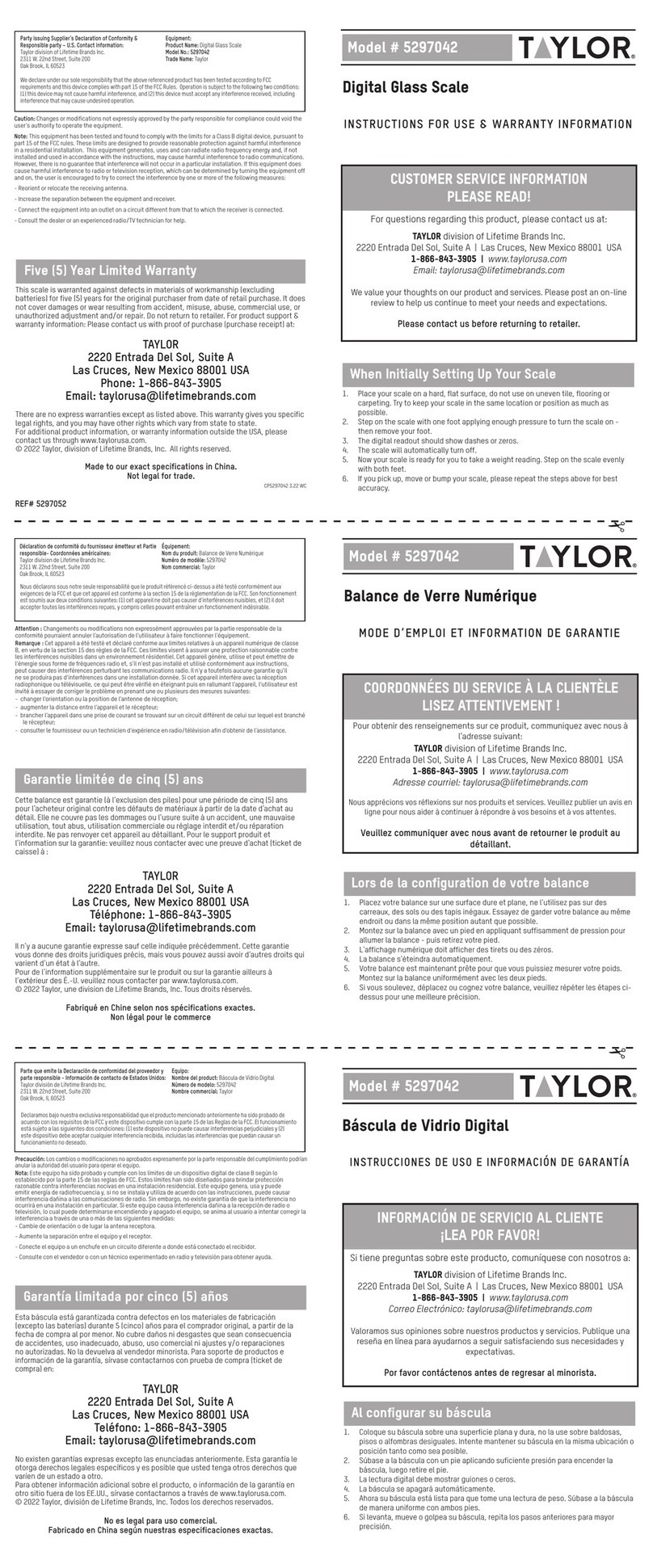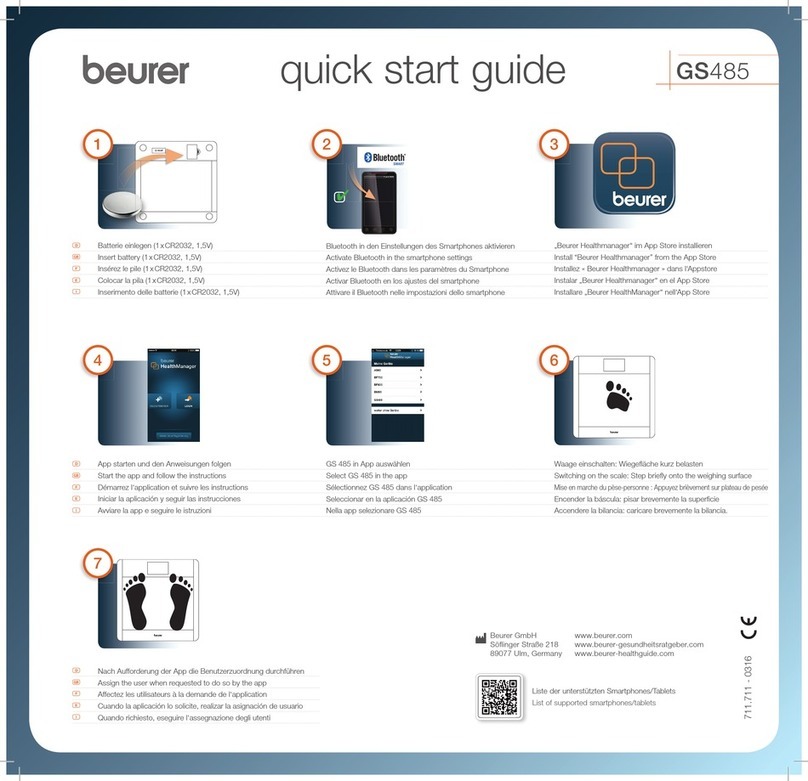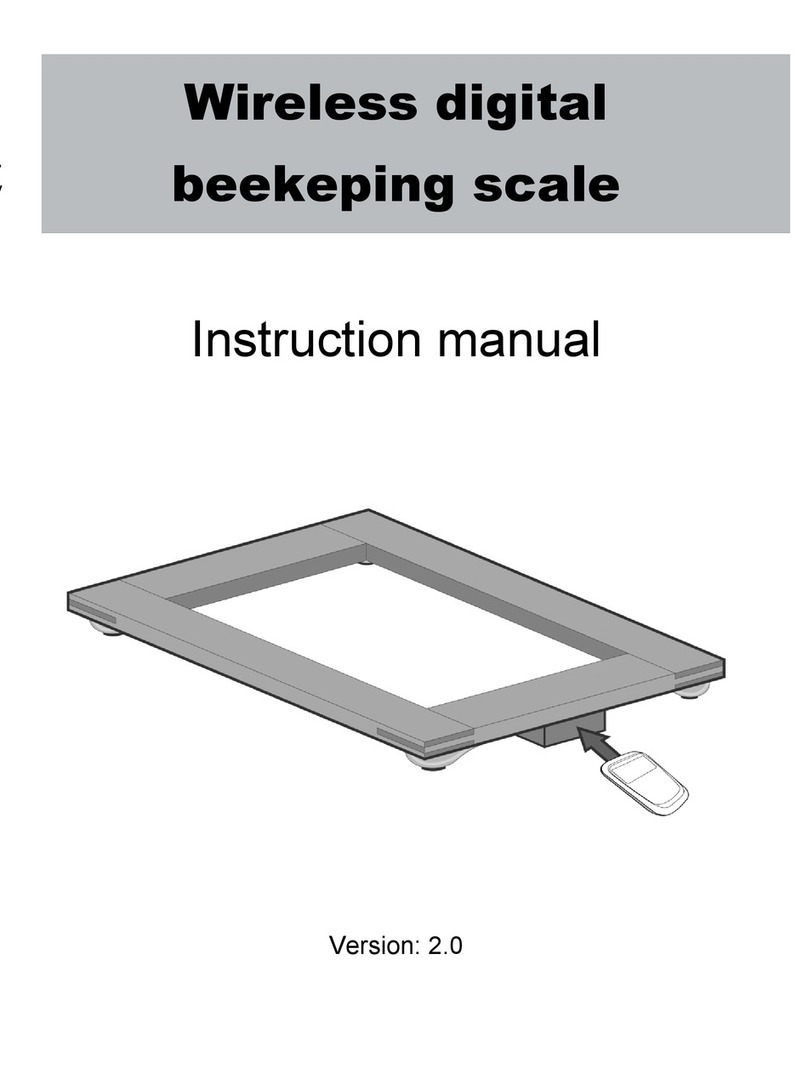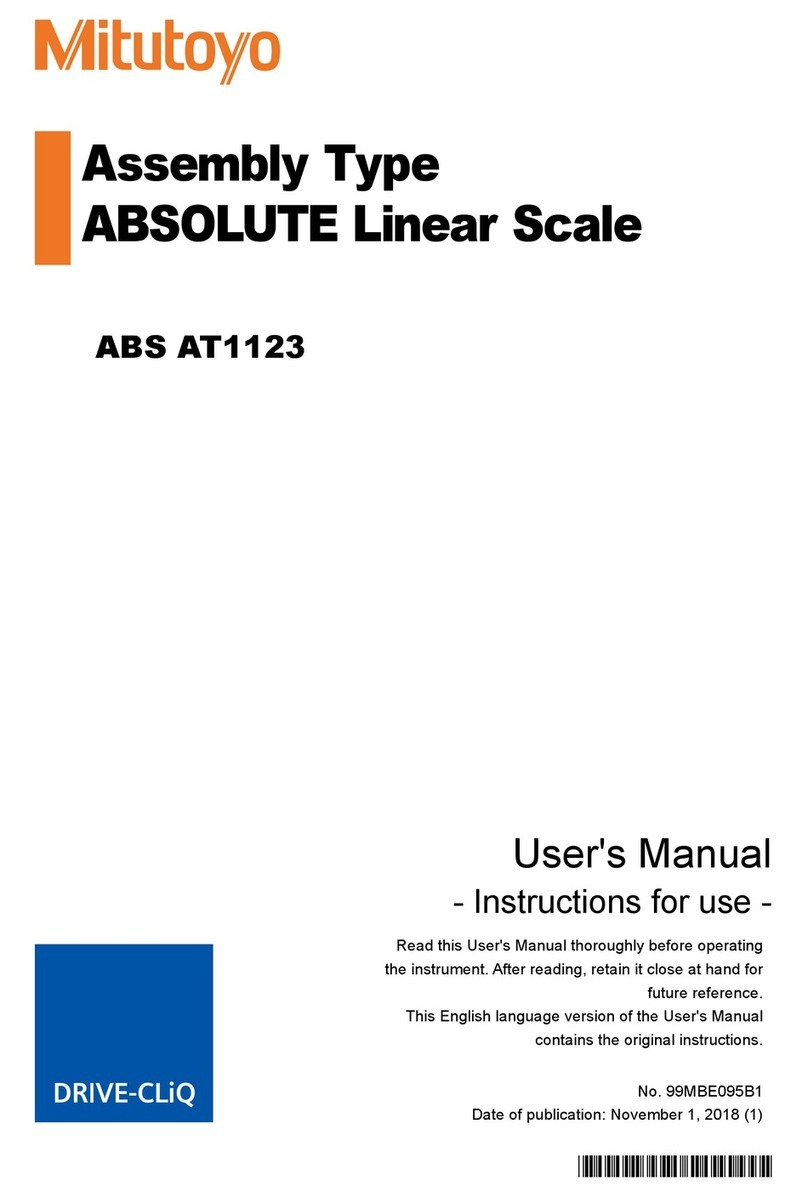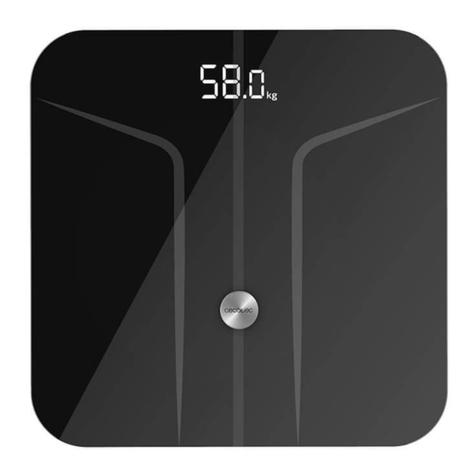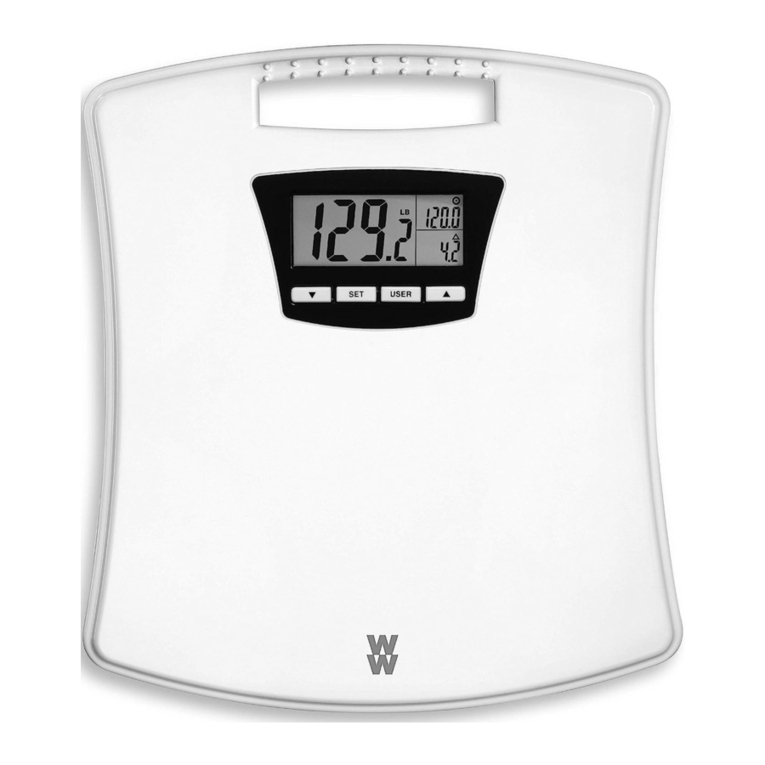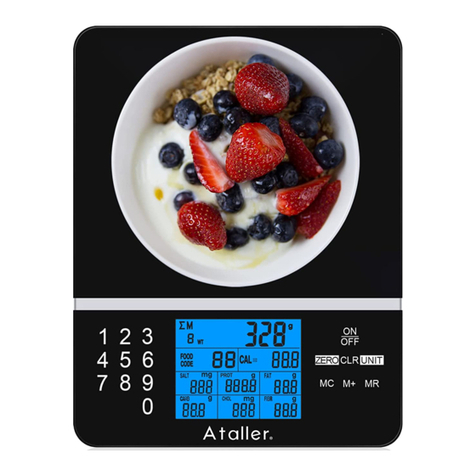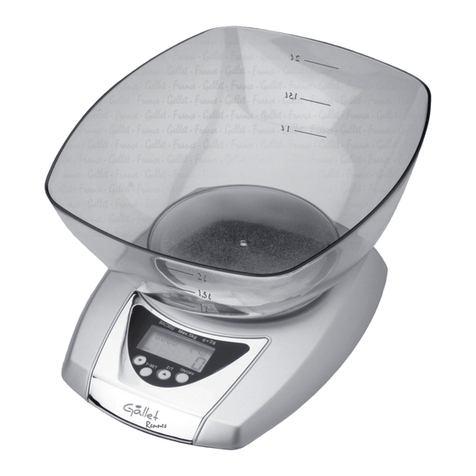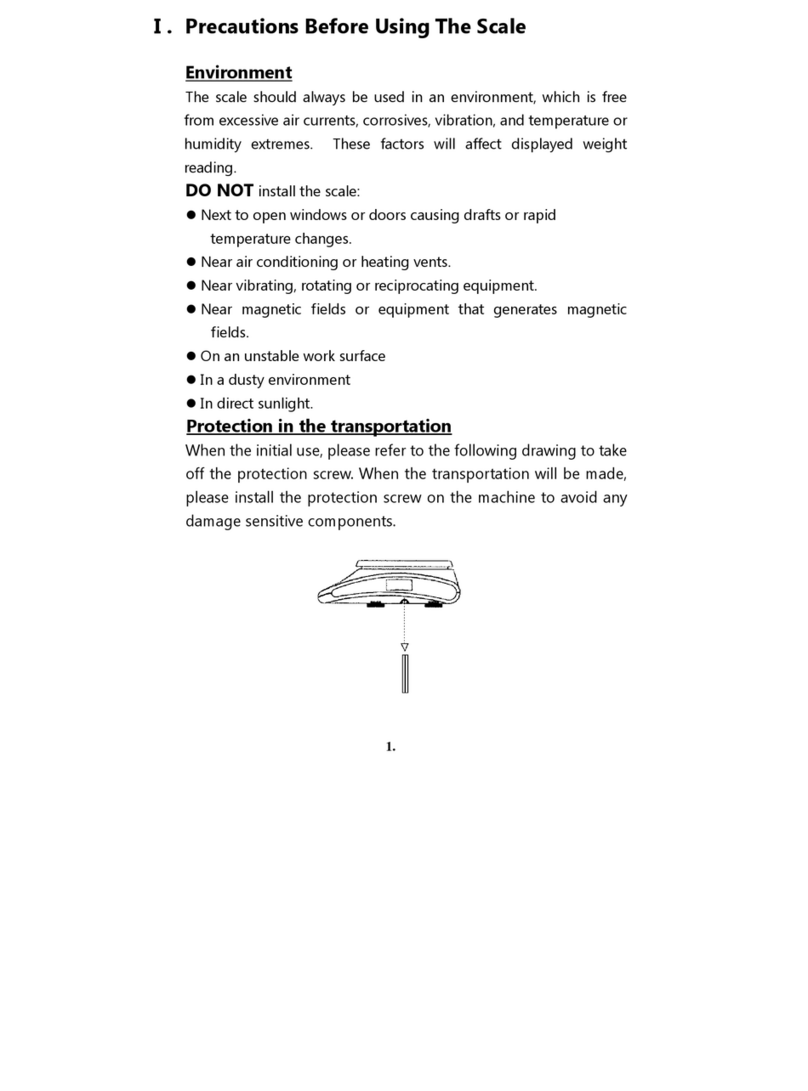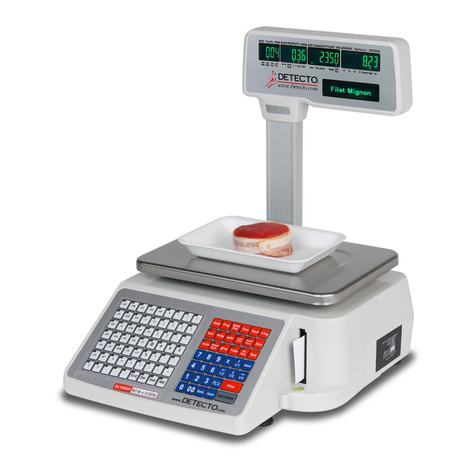Dini Argeo HLD Series User manual

LABORATORY SCALE
LABORWAAGE
BALANCE POUR LABORATOIRES
BILANCIA DA LABORATORIO
HLD
OPERATING MANUAL
Industrial Weighing Systems
9 Richmond St, Picton, Ontario, Canada, K0K 2T0
www.iwsystems.ca e-mail info@iwsystems.ca
HLD_V1.003_11.06_EN_DE_FR_IT

3
ENGLISH
INDEX
1. INTRODUCTION ................................................................................................................................................................. 4
2. MAIN TECHNICAL SPECIFICATIONS ............................................................................................................................... 4
3. INSTALLATION ................................................................................................................................................................... 5
3.1 POWER SUPPLY AND START-UP ............................................................................................................................ 5
3.2 BATTERY POWERED ............................................................................................................................................... 5
4. FRONT PANEL KEYS AND INDICATORS ......................................................................................................................... 6
5. SYMBOLS ON THE LCD DISPLAY .................................................................................................................................... 7
6. OPERATION ....................................................................................................................................................................... 7
6.1 AUTOMATIC ZERO UPON START-UP ...................................................................................................................... 7
6.2 SCALE ZERO FUNCTION ......................................................................................................................................... 7
6.3 TARE FUNCTION ...................................................................................................................................................... 7
6.4 OVERLOAD MESSA E ............................................................................................................................................ 7
6.5 TOTALISATION OF THE WEI HT ............................................................................................................................ 8
6.5.1 MANUAL OR AUTOMATIC TOTALIZATION .................................................................................................... 8
6.6 COUNTIN PIECES .................................................................................................................................................. 8
6.7 SAMPLE WEI HT PERCENTILE .............................................................................................................................. 9
6.8 UNIT OF MEASURE CONVERSION ......................................................................................................................... 9
6.8.1 SECONDARY UNITS OF MEASURE ............................................................................................................. 9
7. SET-UP ENVIRONMENT .................................................................................................................................................... 9
7.1 SET-UP ENVIRONMENT BLOCK DIA RAM .......................................................................................................... 10
7.2 F1 Unt CONFI URATION OF SECONDARY UNITS OF MEASURE ...................................................................... 10
7.3 F2 bL DISPLAY BACKLI HTIN ............................................................................................................................ 10
7.4 F3 CoM TRANSMISSION MODE ............................................................................................................................ 11
7.5 “tEcH” - SCALE CONFI URATION ......................................................................................................................... 11
8. SERIAL OUTPUT .............................................................................................................................................................. 13
8.1 TRANSMISSION MODES ........................................................................................................................................ 13
. ERROR MESSAGES ........................................................................................................................................................ 14
RECYCLING INSTRUCTION ................................................................................................................................................ 14
DECLARATION OF CONFORMITY ...................................................................................................................................... 15
WARRANTY .......................................................................................................................................................................... 15

4
1. INTRODUCTION
This manual was created to help you install and learn all about the functional possibilities of the HLD scale.
WARNINGS
The scales should be sited in a location that will not degrade the accuracy.
Avoid extremes of temperature. Do not place in direct sunlight or near air conditioning vents.
Avoid unsuitable tables. The tables or floor must be rigid and not vibrate. Do not place near vibrating machinery.
Avoid unstable power sources. Do not use near large users of electricity such as welding equipment or large motors.
Avoid high humidity that might cause condensation. Avoid direct contact with water. Do not spray or immerse the scales in
water.
Avoid air movement such as from fans or opening doors. Do not place near open windows.
Keep the scales clean.
Do not stack material on the scales when they are not in use.
2. MAIN TECHNICAL SPECIFICATIONS
Model
Plate
dimensions
mm
Capacity
g
Standard
Division
g (*)
HR
Division
g (*)
Linearity
g +/-
Internal
sensitivity
g
Min.
APW
recommended
g
HLD150
Φ
80mm
150
0,02
0,002
0,004
0,0002
0,002
HLD300
Φ
120mm
300
0,05
0,005
0,01
0,0005
0,005
HLD600
Φ
120mm
600
0,1
0,01
0,02
0,001
0,01
HLD1500
140x150mm
1500
0,2
0,02
0,04
0,002
0,02
HLD3000
140x150mm
3000
0,5
0,05
0,1
0,005
0,05
HLD6000
140x150mm
6000
1
0,1
0,2
0,01
0,1
(*) Standard and HR division selectable in weighing phase, through the unit of measure conversion function, see section
6.8.
Stabilisation Time
2
Seconds typical.
Operative Temperature:
0°C
-
40°C / 32°F
-
104°F.
Power supply:
with fitted 240 Vac mains power adapter or with fitted battery
Battery life:
up to
3
0 hours of continuous use.
Recharge time:
12 hours.
Parameter Setup:
Calibration fully digital and programmable from the keyboard
.
Display :
LCD backlit with 6 ½ digits 1
6
m
m high
.
Case:
ABS Plastic.
Zero range:
+/
-
2% of max load capacity.
Auto ze
ro at start
-
up:
+/
-
1
0
%
of max load capacity.

5
3. INSTALLATION
a) Unpack then product.
b) If present (depending on the model), it is necessary to unscrew and remove the locking screw for the transportation
placed under the scale, as shown in the figure below:
c) Level the platform by adjusting the adjustable feet until the bubble is in the centre of the level. The stability of the
platform is very important.
ALL THE CORNERS MUST REST IN A UNIFORM WAY. Carefully check that all feet fully rest on the ground and that the
platform, loaded on the corner, is not unstable (if a corner is not resting on the ground its relative foot is easier to turn).
3.1 POWER SUPPLY AND START-UP
The indicator can be powered with a fitted 240 Vac external power adapter or just with the fitted battery.
NOTE: it is advisable to completely recharge the battery (12 hours) with the first installation of the instrument.
TO POWER the instrument through the 240 Vac mains put the AC/DC power plug in the appropriate socket under the
scale and the power adapter in the 240 Vac mains socket.
TO TURN ON/TURN OFF the instrument press the ON/OFF key.
3.2 BATTERY POWERED
The weighing indicator can be operated from the battery if desired.
When the battery needs charging the
symbol on the weight display will be empty. The battery should be charged
when the symbol is on. The scale will still operate for about 10 minutes after which it will automatically switch off to protect
the battery.
To charge the battery simply plug into the mains power. The scale does not need to be turned on.
The battery should be charged for 12 hours for full capacity.
You can find the
symbol on the display to indicate the status of battery charging. When the scale is plugged into

6
the mains power the internal battery will be charged. If the symbol is full the battery has a full charge. If it is half the
battery is nearly discharged and empty indicates the battery should be charged.
As the battery is used it may fail to hold a full charge. If the battery life becomes unacceptable then contact your distributor
4. FRONT PANEL KEYS AND INDICATORS
FUNCTION OF THE KEYS
- It turns on/off the scale.
- Clears the displayed gross weight if it’s within +/- 2% of the total capacity.
- A secondary function of "Enter" key when setting parameters or other functions.
- If pressed for an instant it executes the semiautomatic tare.
- A secondary function of incrementing the active digit or selecting a value or
parameter when in setting mode.
- If pressed for an instant it allows linking a weight to the 100 percentile (see section
6.7).
- In the numeric input, it selects the digit to be modified, from left to right.
- If pressed for an instant it allows to execute the reference operation (see section
6.6)
- In the numeric input, it selects the digit to be modified, from right to left.
- It allows to convert in the configured secondary units of measure (see section 6.8).
- In the numeric input phase, it quickly clears the present value.
- If pressed for an instant it adds the value to the accumulation memory if the
accumulation function is not automatic.
- Secondary function (ESC) is to return to normal operation when the scale is in a
parameter setting mode.

7
5. SYMBOLS ON THE LCD DISPLAY
The LCD display has symbols which show the indicator’s functioning status; you will find the description for each symbol
below.
6. OPERATION
6.1 AUTOMATIC ZERO UPON START-UP
The indicator has an “auto zero at start-up” function: in other words it means that if at start-up a weight within +/- 10%
of the capacity is detected, it will be zeroed; if the weight is not within this tolerance, the display shows “Err 4” and the
present weight after a few instants.
6.2 SCALE ZERO FUNCTION
You can press the ZERO key at any time to set the zero point from which all other weighing and counting is measured,
within +/- 2% of power up zero. This will usually only be necessary when the platform is empty. When the zero point is
obtained the display will show the indicator for zero.
The scale has an automatic rezeroing function to account for minor drifting or accumulation of material on the platform
(see step “P4 AZn”, section 7.5). However you may need to press the ZERO key to rezero the scale if small amounts
of weight are shown when the platform is empty.
6.3 TARE FUNCTION
Zero the scale by pressing the ZERO key if necessary. The zero symbol will be on.
Place a container on the platform, a value for its weight will be displayed.
Press the TARE key to tare the scale when the “stable” is light. The weight that was displayed is stored as the tare
value and that value is subtracted from the display, leaving zero on the display. The "T" indicator will be on. As
product is added only the weight of the product will be shown. The scale could be tared a second time if another type
of product was to be added to the first one. Again only the weight that is added after taring will be displayed.
When the container is removed a negative value will be shown.
To remove the tare, unload the scale and press again TARE.
6.4 OVERLOAD MESSAGE
Please do not add item that is over the maximum capacity. When reading “- - - - - -“ and hear beeping sound, remove
the item on the platter to avoid damage to the load cell.
SYMBOL
FUNCTION
Indicates the status of battery charging (see section 3.2)
Indicates that the weight is stable.
NET
Indicates that the displayed weight is a net weight.
0
Indicates that the weight detected on the weighing system is near zero.
T
Indicates that a tare is enabled.
g
Indicates the unit of measure in use (gram).
Pcs
Indicat
es that the number of sampled pieces is being displayed (see section
6.6).
%
Indicates that the weight is displayed in percentile of the sample weight (see section 6.7).
kg, g, ct, lb, oz,
d, oz t, dwt,
mom, tLh, tLc,
tL t, t, bt, n
Indicate the unit of measure in use (see section 6.8).

8
6.5 TOTALISATION OF THE WEIGHT
The scale can be set to accumulate manually the weight on the scale by pressing the PRINT/M+ key (see step “AU”,
chapter 7.1).
The weight displayed will be stored in memory when the PRINT/M+ key is pressed and the weight is stable.
The display will show "ACC 1" while the weight will be printed, then the total in memory for 2 seconds before returning
to normal.
Remove the weight, allowing the scale to return to zero and put a second weight on. Press the PRINT/M+ key, the
display will show " ACC 2" and then the new total.
Continue until all weights have been added.
To view and print the totals in memory press PRINT/M+ key when current scale in zero status (Zero indicator on)
To clear the accumulated total weight, press the PCS key when show total values.
Scale automatically exit form the visualization of the total values after few seconds.
NOTE:
- The totalisation functions with a minimum weight of 20d.
- The maximum number of totalisations is 999 while the maximum total value which may be accumulated is
999999.
Once reached these limits, one should clear the total; by pressing PRINT/M+ the message “AdErr” will appear on
the display.
- The total values will be cleared when it’s turned off.
6.5.1 MANUAL OR AUTOMATIC TOTALIZATION
The operation of accumulation, normally done manually with key PRINT/M+, can be done automatically when the
weight is stable. In regards to the choice of the totalisation execution mode, see step “AU”, section 7.1.
6.6 COUNTING PIECES
Through the reference function it’s possible to use the scale as a piece counter.
COUNTING PROCEDURE
The operations to be carried out are the following:
1) Place the empty container on the scale and press TARE to tare it.
2) Check that the zero is on the display and put the quantity of pieces chosen for the SAMPLE on the scale and
press PCS key
.
3) The display suggests a REFERENCE QUANTITY. The possible options are: 10, 20, 50, 100, and 200.
4) Press TARE the number of times needed to reach the desired sample size.
5) Press ZERO; the display will indicate "- - - - - -" and the indicator will calculate the Average Piece Weight (APW).
After a few instants the display will indicate the quantity selected put on the platform.
6) Add the rest of the items to count in the container and whose value will appear on the display.
7) Unload the scale, the APW will remain stored in memory for the next counting of similar pieces, without having to
repeat the REFERENCE operation.
8) By pressing the MODE
key one switches from the display of the number of pieces to the display of the average
piece weight and of the net weight.
) Per cancel or to carry out a new reference operation, press the PCS key and repeat the operations as
describe in point 1).

9
6.7 SAMPLE WEIGHT PERCENTILE
In this functioning mode, the display shows the weight expressed as a percentile, comparing it with a reference weight
for which the 100 percentile has been already linked.
MATCHING PROCEDURE
-Put the reference weight on the scale
.
-Press the % key when the “stable” indicator is on.
-The scale has executed the percentile matching and displays the percentile of the weight on the scale.
-Unload the scale: the following weighs will be expressed as a percentage in reference to the reference weight.
-To cancel or execute a new matching operation, press the % key and repeat the operations described above.
6.8 UNIT OF MEASURE CONVERSION
By pressing various times the MODE key the conversion into the secondary units of measure takes place; the relative
symbol will turn on in the display (see section 5).
NOTE: The function is not available if the counting function or the percentile function is enabled.
6.8.1 SECONDARY UNITS OF MEASURE
No
Unit mark
Unit name
Conversion
(g)
1
g
gram
2
g
gram
(
weight
x 10
,
high resolution
)
3
ct
net carat
=0.2g
4
lb
lb
=453.59237g
5
oz
ounce
=28.349523125g
6
d
dram
=1.7718451g
7
ozt
troy ounce
=31
.1034768g
8
dwt
penny weight
=1.55517384g
9
mom
momme
=3.749996g
10
tl.h
tael twn
=37.49995g
11
tl.c
tael chn
=37.799375g
12
Tl.t
troy tael
=37.4290018g
13
t
tola
=11.6638039g
14
Bt
Bangladeshi tola
1bt=11.6638039g
15
n
newton
NOTE: It is possible to enable or disable the unit of measure in the “F1 Unt” step, see section 7.2.
7. SET-UP ENVIRONMENT
The scale has various parameters that can be configured in the SET-UP environment.
To enter in the SET-UP environment press during the start-up the MODE key during the countdown.
- The display will show the first function, which is "F1 Unt":
- Pressing the MODE will cycle through the other functions.
- Pressing ZERO will allow you to set the function.
- Use MODE to select the value, or set a value using the % key and the PCS key to move the active digit and then using
the TARE key to increment a digit
- Press the ZERO key to confirm the modification and pass to the following step or use the PRINT/M+ key to leave a
parameter unchanged or to escape set-up environment.

10
7.1 SET-UP ENVIRONMENT BLOCK DIAGRAM
SETUP
ENVIRONMENT
F2 bL
F1 unt
XXXXXX
tEch Pin
P3 Cnt
P4 Azn
P6 CAP
150, 300,
600, 1500,
3000, 6000
0.5d, 1d,
2d, 4d
n
g Ut on, Ut oFF
Ut on, Ut oFF
... Ut on, Ut oFF
EL on, EL AU,
EL oFF,
baud b600, b1200,
b2400, b4800,
b9600
F3 CoM Printer port 232, USB
Transmission
mode
P Prt, P Cont,
P AUto,
WirELE
Printer type tP, LP-50
P1 Lin
P2 CAL
P5 GRA X.XXXXX
7.2 F1 Unt CONFIGURATION OF SECONDARY UNITS OF MEASURE
By pressing ZERO it’s possible to choose the units of measure for the conversion function (see section 6.8), enabling
(on) or disabling (oFF) the suggested secondary units of measure:
1) The display proposes the first secondary unit of measure to be enabled or disabled.
2) Press MODE to change the options and confirm with ZERO, or press PRINT/M+ to exit without confirming and
pass to the following unit.
3) The display proposes the 2nd secondary unit to be enabled or disabled.
4) Proceed as described in point 2 up until the last proposed unit of measure.
7.3 F2 bL DISPLAY BACKLIGHTING
EL oFF backlighting always off
EL on backlighting always on.
EL AU backlighting on only when the weight is greater than 20d or when a key is pressed. When a key is pressed,
if the weight is less than 20d, the backlighting remains active for 5 seconds.

11
7.4 F3 CoM TRANSMISSION MODE
PRINTER PORT
One will be asked to select the port to be used, press MODE to select one of the suggested values:
S 232 RS232 port
S USB Not used in this application.
Select S 232 and press ZERO to confirm.
TRANSMISSION MODE
One will be asked to select the transmission mode, press MODE to select one of the suggested values:
P Prt Manual transmission through the PRINT/M+ key.
P Cont continuous transmission with P Cont. protocol
P Auto Automatic transmission upon weight stability (when in totalisation mode).
WirELE Not used in this application.
Press ZERO to confirm.
BAUD RATE
One will be asked to select the baud rate, press MODE to select one of the suggested values: 600, 1200, 2400 4800,
9600. Press ZERO to confirm.
PRINTER TYPE
One will be asked to select the printer type, press MODE to select one of the suggested values:
tP enables the printing with ASCII printer (for example TPR).
LP-50 Non used in this application.
Select tP and press ZERO to confirm.
7.5 “tEcH” - SCALE CONFIGURATION
By pressing ZERO it’s possible to access the scale configuration menu. One is asked to enter the password.
To enter the menu press the PCS, M+, and TARE keys, one after the other.
The display shows the first parameter, “P1 Lin”.
IN CASE THE ZONE OF USE IS DIFFERENT FROM THE CALIBRATION ZONE ONE SHOULD:
1) Set the gravity acceleration value for the ZONE OF CALIBRATION, see P5 step.
2) Carry out the calibration as following described (P1 or P2 step).
3) Set the gravity acceleration value for the ZONE OF USER, see P5 step.
P1 Lin CALIBRATION WITH DEFINED SAMPLE WEIGHTS
By pressing ZERO it’s possible to access the calibration with defined sample weights. One is asked to enter the
password.To enter the menu press the M+, PCS, and % keys, one after the other.
-The display shows “UNLOAD”;
-Empty the platter, after Stable indicator on the weight will be acquired automatically;
-The display shows “L XXX”;
-Put the first sample weight, defined in the table below, on the scale and the stability indicator is on the weight will
be acquired automatically;
-The display shows “L XXX”;
-Put the second sample weight, defined in the table below, on the scale and when the stability indicator is on the
weight will be acquired automatically;
-The display shows “L XXX”;
-Put the thirdsample weight, defined in the table below, on the scale and when the stability indicator is on the
weight will be acquired automatically;
-The indicator returns to weighing.

12
CALIBRATION WEIGHTS
MODEL
HLD150
HLD300
HLD600
HLD1500
HLD3000
HLD6000
1° SAMPLE WEIGHT
50g
100g
200g
500g
1000g
2000g
2° SAMPLE WEIGHT
100g
200g
400g
1000g
2000g
4000g
3° SAMPLE WEIGHT
150g
300g
600g
1500g
3000g
6000g
P2 CAL CALIBRATION WITH FREE SAMPLE WEIGHT
By pressing ZERO it’s possible to access the calibration with free sample weight.
-The display shows “UNLOAD”;
-Empty the platter, after Stable indicator on the weight will be acquired automatically;
-Set the value of the mass weight by using the MODE key to clear the value, the TARE key to increase the value
of the digit, the PCS key to go on the previous digit and the % key to go on the following digit.
-Confirm the entered value with ZERO; the display shows “LOAD”;
-Put the mass on platter, after stable indicator on the weight will be acquired automatically.
-The indicator returns to weighing.
P3 Cnt A/D CONVERTER POINTS
By pressing ZERO the instrument shows the A/D converter points relative to the weight on the scale.
Press PRINT/M+ to exit the step.
P4 AZ ZERO TRACKING
By pressing ZERO one sets the divisions' number for the zero tracking, in other words, scale’s thermal drift
compensation parameter; the set value corresponds to the number of divisions which is cleared.
Press MODE to select one of the suggested divisions: oFF, 0.5d, 1d, 2d, 4d.
P5 GrA GRAVITY COEFFICIENT
Trough this step one access the acceleration value setting of instrument calibration and use zone.
Manual entry of the g value: Set the value by using the MODE key to clear the value, the TARE key to increase the
value of the digit, the PCS key to go on the previous digit and the % key to go on the following digit; one must modify
all the 6 digits of the gravitational acceleration. Confirm the entered value with ZERO or press PRINT/M+ to exit
the step.
P6 CAP SCALE CAPACITY
By pressing ZERO one selects the total capacity of the scale.
Press MODE to select one of the suggested divisions: 150, 300, 600, 1500, 3000, 6000 g.

13
8. SERIAL OUTPUT
Specifications
RS-232 output for the transmission of the weight data
ASCII code
Baud 4800 (selectable from 600 - 9600)
Connector: 9 pin (female)
Pin 2: RECEPTION
Pin 3: TRANSMISSION
Pin 5: ND
8.1 TRANSMISSION MODES
The transmitted data format varies depending on the selected transmission mode (see section 7.4).
P Prt and P Auto
Totalisation Mode
In the normal weighing operations when one is accumulating the weight the data format is the following:
When the totals are recalled from the storage the data format is the following:
Counting Mode
In the counting operations when the PRINT/M+ key is pressed the data format is the following:
Percentage Mode
In the percentage operations when the PRINT/M+ key is pressed the data format is the following:
Progressive of totalisations
Total net weight
<CR><LF>
<CR><LF>
Percentage of weight
<CR><LF>
Progressive of totalisations
S for gross weight, NT for net weight
<CR><LF>
<CR><LF>
Number of pieces
Average piece weight
S for gross weight, NT for net weight
<CR><LF>
<CR><LF>

14
P CONT
In this transmission mode the instrument transmits continuously the following data format depending on the functioning
mode:
Totalisation Mode
Counting Mode
Percentage Mode
. ERROR MESSAGES
ERROR
MESSA ES
DESCRIPTION
RESOLUTION
-
-
-
-
-
-
Over range
Remove weight from the scale
.
Err 4
Zero Setting Error
Upon start
-
up or when the
ZERO
key is pressed, the weight on the
scale exceeds the percentage programmed on the max. capacity.
Remove the excess weight and retry.
Err 5
Keyboard Error.
The keyboard could be damaged
.
Err 6
Input signal greater
than 3mV/V
Indicates that the A/D converter value is greater than the maxim
um
value:
- Remove the weight from the scale if it’s exceeding.
- The load cell or the electronics could be damaged.
RECYCLING INSTRUCTION
The crossed-out wheeled bin on the product means that at the product end of life, it must be taken to
separate collection or to the reseller when a new equivalent type of equipment is purchased. The
adequate differentiated refuse collection in having the product recycled, helps to avoid possible
negative effects on the environment and health and supports the recycling of the materials of which
the equipment is made. The unlawful disposal of the product by the user will entail fines foreseen by
the current regulations.
ST, S,XXX.XXXXkg
<CR><LF>
<CR><LF>
S for gross weight, NT for net weight, XXX.XXXX is the weight
PCS:XXXXXXXXpcs
<CR><LF>
<CR><LF>
XXX.XXXX is the Number of pieces
PERC:XXXXX.XX
%
<CR><LF>
<CR><LF>
XXXXX.XX is the Percentage of weight
This manual suits for next models
6
Table of contents
Other Dini Argeo Scale manuals
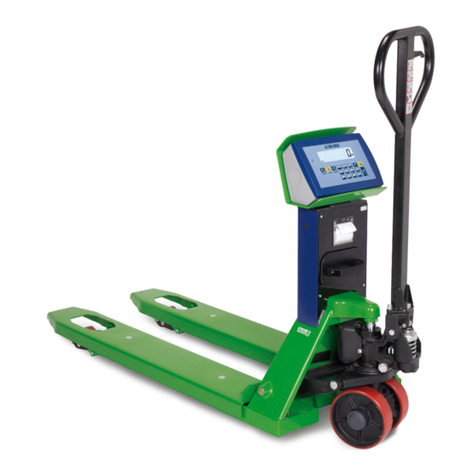
Dini Argeo
Dini Argeo TPW Series Operating instructions
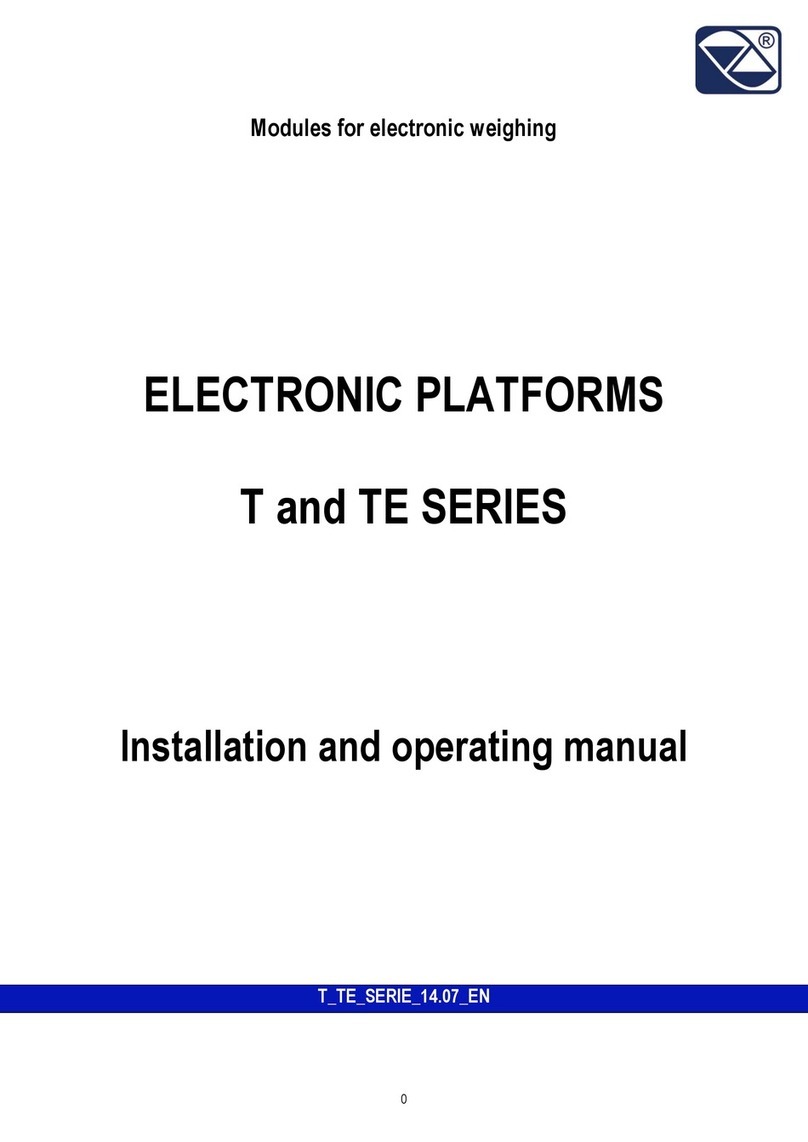
Dini Argeo
Dini Argeo T Series User manual
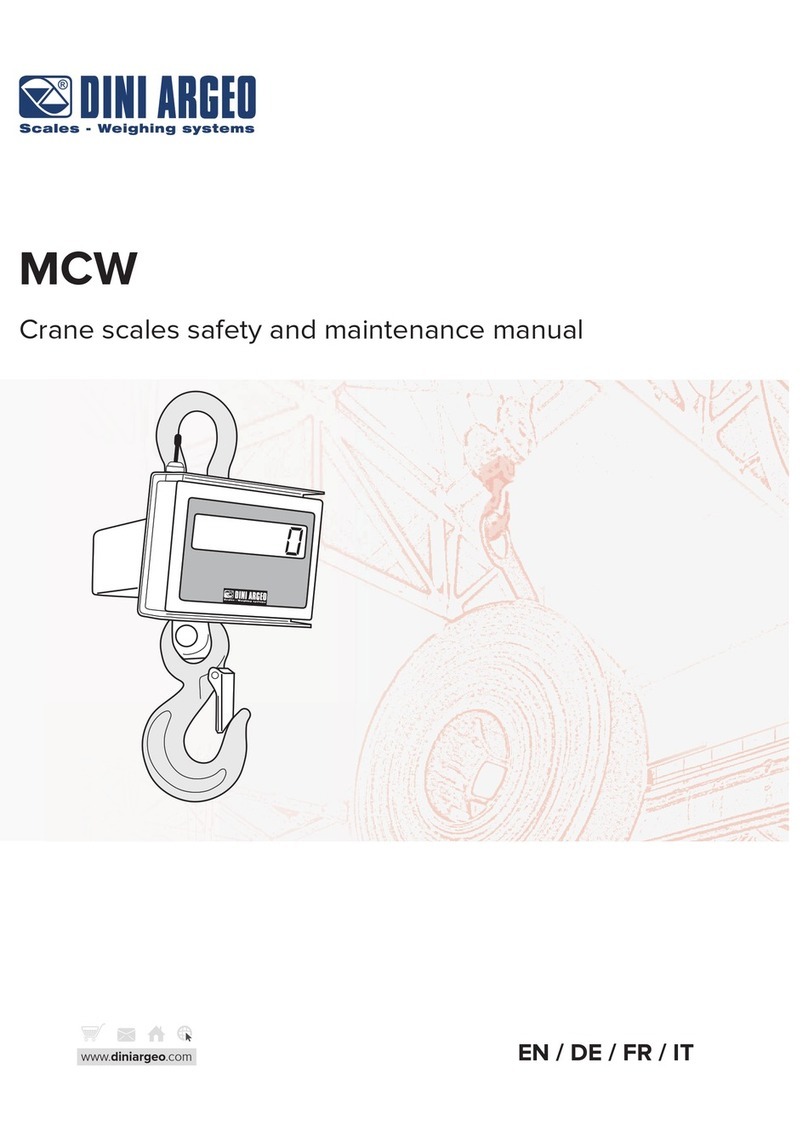
Dini Argeo
Dini Argeo MCW Guide
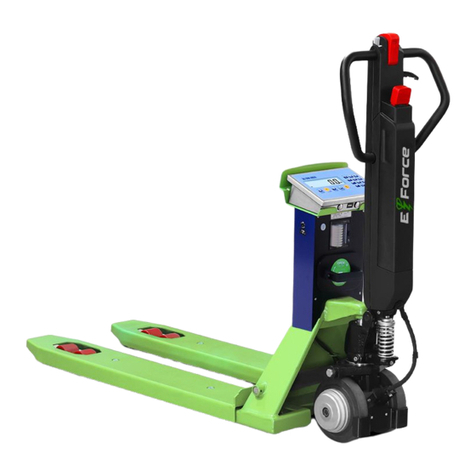
Dini Argeo
Dini Argeo TPW E-FORCE Instruction Manual
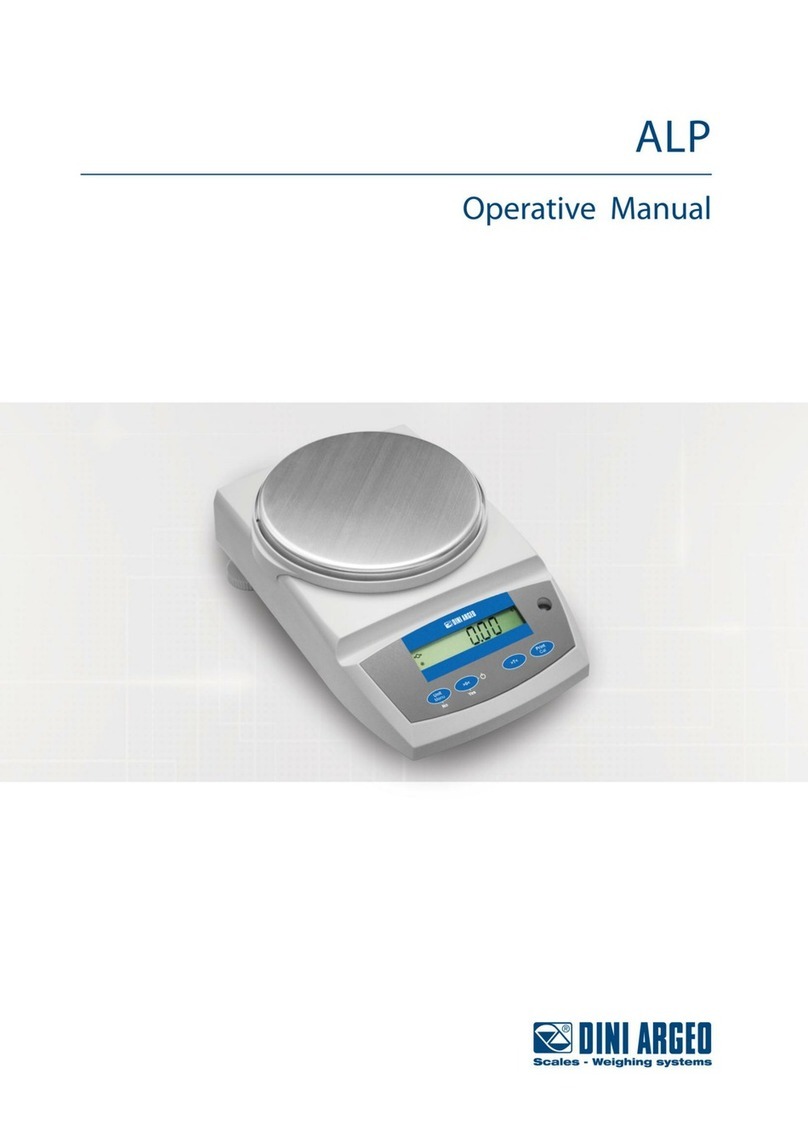
Dini Argeo
Dini Argeo ALP User manual
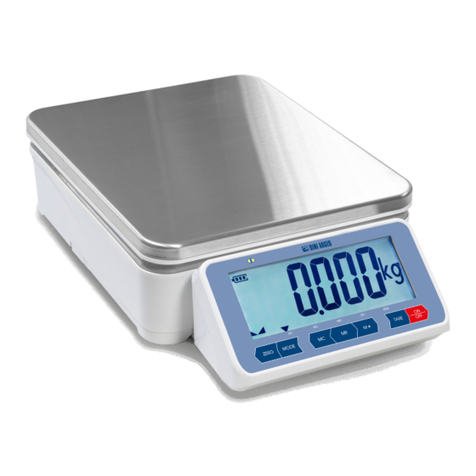
Dini Argeo
Dini Argeo APM User manual
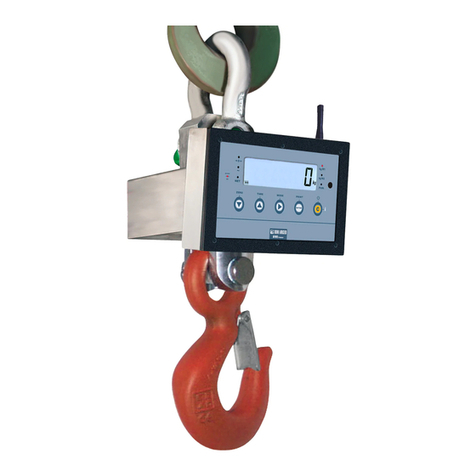
Dini Argeo
Dini Argeo MCW PROFESSIONAL User manual
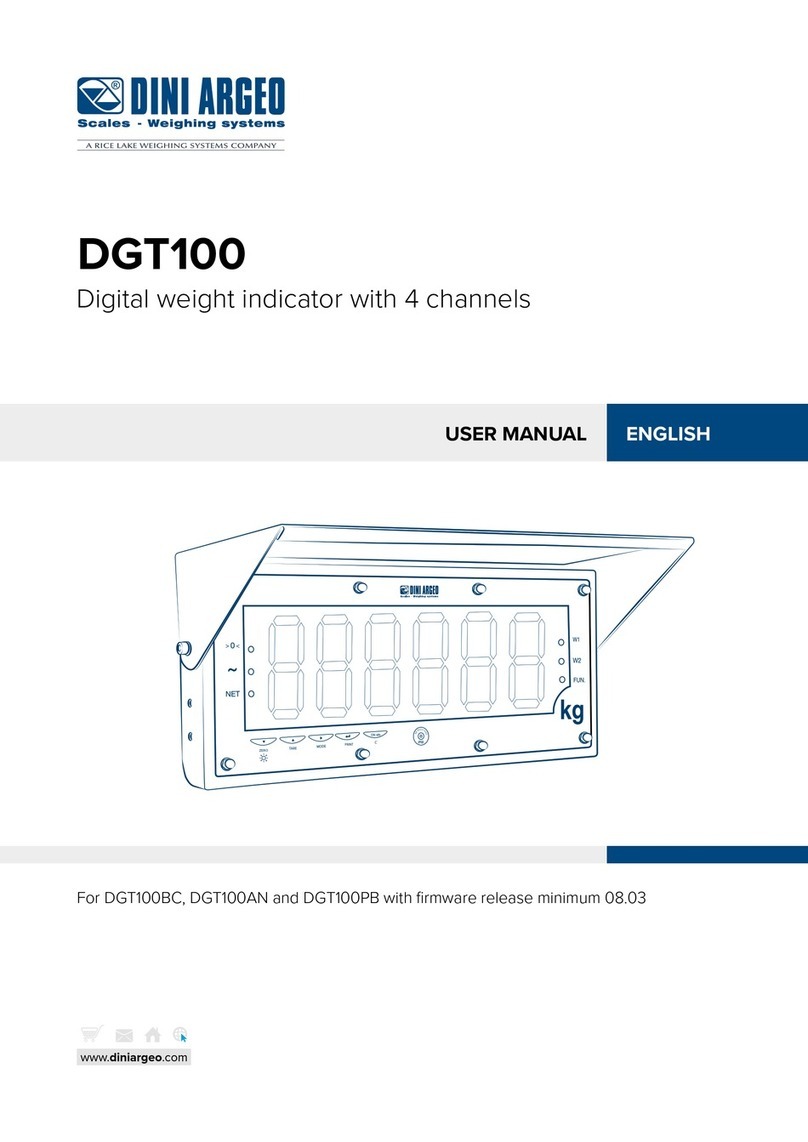
Dini Argeo
Dini Argeo DGT100 User manual
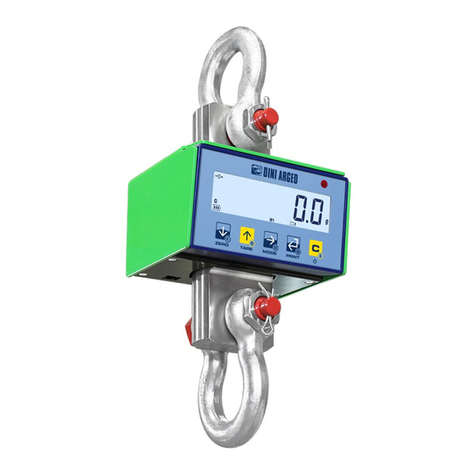
Dini Argeo
Dini Argeo MCWN Series Operating instructions


